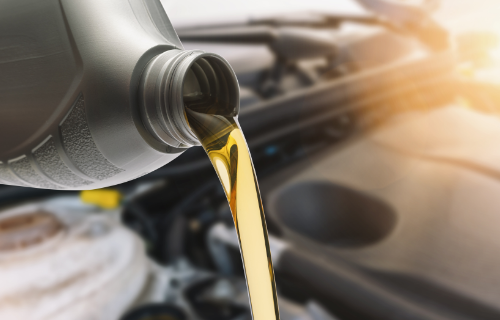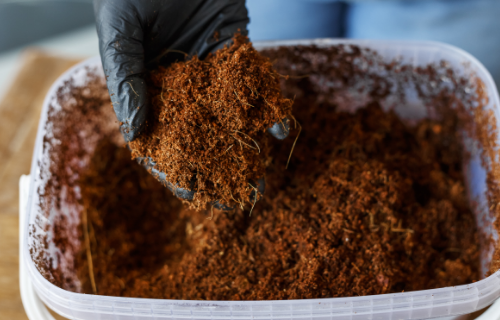Difference Between Antifoam and Defoamer
Antifoam and defoamer are chemical additive agents that prevent or control the formation of foam in industrial processes, thereby avoiding the problems associated with it. They help destabilize the foam and interfere with the foam formation process. These are surface-active molecules that decrease the surface elasticity of liquids, which in turn prevents the foam to attain a state of equilibrium.

What is Antifoam?
Antifoam agents are typically inert chemicals consisting of a liquid, such as silicone, mineral oil, etc., and a hydrophobic solid, such as fatty acids, silica or wax. Antifoam is an extremely effective foam suppressor that is generally added to the foaming solution prior to its formation to prevent excessive formation of foam. They are mixed with industrial process liquids to reduce foam after it has been formed. Antifoams are usually hydrophobic, finely divided, insoluble materials. The first antifoams probably were oils and fats, mostly locally available oil, either mineral or naturally occurring.
Foam can be defined as dispersions of a gas in a liquid or solid. Foam is itself extremely complex, consisting of polydisperse gas bubbles separated by draining films. Foams are produced as a result of several industrial processes, such as sugar processing, soap manufacturing, and starch wastewater treatment. The best antifoam agent should be the one that controls the foam for a specific period of time at the lowest cost and does not interfere with the process or the final product.

What is a Defoamer?
A defoamer is an antifoaming agent that implies an additive to kill existing foam. Defoamers are chemical processing aids which are added to a system in industrial processes to eliminate or minimize foam. These are chemical additives mixed with industrial process liquids to induce rapid foam collapse. Foam can cause serious problems if left unattended, like formation of air bubbles in the surface coatings. Defoamers either prevent the formation of foam or break the formation of foam. The chemistry of defoamers and antifoams are often similar, so the terms are often used interchangeably.
Defoamer is a generic term used as an industry standard to refer to any processing aid designed to control foam. A defoaming agent mainly contains surfactants, emulsifier, carrier, and emulsifier additives. They remove air and bubbles from liquids used in a wide range of industrial applications, such as fermentation, meat and poultry processing, water treatment, paper and pulp production, chemical cleaning, papermaking, coating, and more. Commercial defoamers can be classified as oil-based, silicone-based, water-based, and powder defoamers.
Difference between Antifoam and Defoamer
Agent
Foam is a major source of problems in industrial applications. Both antifoam and defoamer are chemical foam control agents that are used to minimize or eliminate foam in industrial operations. Both the terms are often used interchangeably. Antifoam implies a foam preventative that is mixed with industrial process liquids to control the wasteful formation of foam. Defoamers are antifoaming agents acting as additives to kill existing foam. Defoamers either prevent the formation of foam or break the formation of foam.
Spreading Ability
While the apparent effect may be different, the one major difference between the two is their spreading ability. Antifoams act as foam suppressors that will have been pre-mixed into the system prior to the onset of foam. Defoamer, on the other hand, is a generic term used as an industry standard to refer to any processing aid designed to control foam. Defoamers will be needed to spread rapidly in an already foaming industrial system.
Example
The antifoaming agents commonly used in industrial applications are insoluble oils, stearates, cetostearyl alcohol, and other silicone-based antifoams that might be delivered as an oil-based or water-based emulsion. Silicon based antifoams are high-performance antifoam emulsions that provide rapid foam knockdown. Commercial defoamers can be classified as oil-based, silicone-based, water-based, and powder defoamers. Examples of defoaming agents are mineral oils, silicone oils, paraffin waxes, organic phosphates, and more.
Antifoam vs. Defoamer: Comparison Chart

Summary
The chemistry of defoamers and antifoams are often similar, so the terms are often used interchangeably. Antifoam acts as a foam preventative while defoamer implies an additive to eliminate existing foam. While the apparent effect may be different, the one major difference between the two is their spreading ability. Antifoams act as foam suppressors that will have been pre-mixed into the system prior to the onset of foam whereas defoamers will be needed to spread rapidly in an already foaming industrial system.
What is antifoam used for?
Antifoams are an important class of chemical additives that aid in reducing the formation of foam in industrial process liquids. The chemistry of antifoams is similar to that of defoamers. Antifoams are usually hydrophobic, finely divided, insoluble materials.
Is a defoamer a surfactant?
Defoamer is a surfactant that is mixed with industrial process liquids to control or eliminate existing foam levels by stopping the bubbles from stabilizing.
What is the meaning of defoamer?
A defoamer is an antifoaming agent used to avoid the formation of foam in the industrial process liquids. It is an inert chemical comprised of a liquid and a hydrophobic solid.
What is antifoam agent example?
Commonly used antifoaming agents are insoluble oils, stearates, cetostearyl alcohol, and other silicone-based antifoams.
- Difference Between Caucus and Primary - June 18, 2024
- Difference Between PPO and POS - May 30, 2024
- Difference Between RFID and NFC - May 28, 2024
Search DifferenceBetween.net :
Leave a Response
References :
[0]Msagati, Titus A.M. The Chemistry of Food Additives and Preservatives. New Jersey, United States: John Wiley & Sons, 2012. Print
[1]Garrett, Peter. Defoaming: Theory and Industrial Applications. Florida, United States: CRC Press, 2017. Print
[2]Garrett, Peter. The Science of Defoaming: Theory, Experiment and Applications. Florida, United States: CRC Press, 2016. Print
[3]McKetta, John J. and William A. Cunningham. Encyclopedia of Chemical Processing and Design: Volume 14 - Crystallization: Nucleation Systems to Design Data-Importance of Accuracy. Florida, United States: CRC Press, 1982. Print
